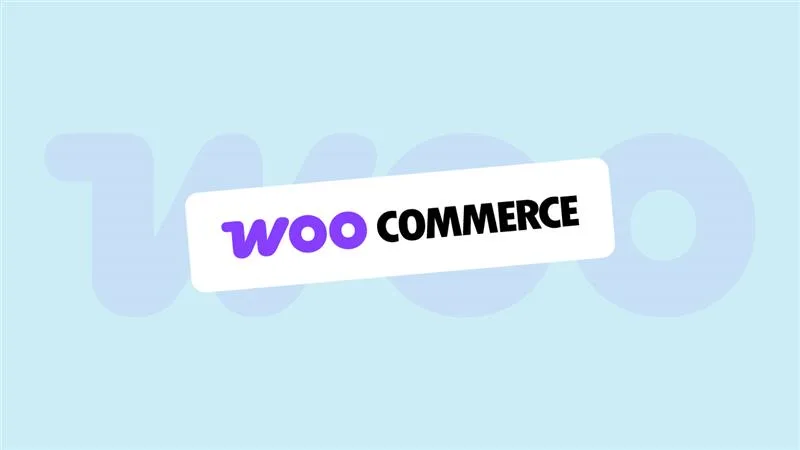Choosing between WooCommerce and Shopify can feel like picking between two great options. Trust me, I’ve been there.
Both are powerful, well-known eCommerce platforms (Although one is a plugin), but they work in very different ways.
WooCommerce is open source and built on WordPress, giving you almost unlimited flexibility. Shopify, on the other hand, is a hosted solution that makes setting up and running a store quick and straightforward.
In this guide, we’ll look at how they compare in pricing, features, ease of use, and more, so you can decide which one fits your business best.
- WooCommerce is an open-source WordPress plugin that gives you full control over your store, while Shopify is a fully hosted ecommerce platform focused on ease of use.
- WooCommerce can be cheaper in the long run, but it requires hosting and setup. Shopify has predictable monthly plans but extra app costs and transaction fees.
- Shopify is faster to set up and easier for beginners, while WooCommerce has a steeper learning curve but offers greater flexibility.
- WooCommerce offers thousands of themes, extensions, and no limits on customization. Shopify has a large app store but works within its own framework.
- Choose WooCommerce if you want control and customization, or Shopify if you prefer convenience, built-in hosting, and dedicated support.
WooCommerce vs. Shopify: Quick Comparison
| Feature | WooCommerce | Shopify |
|---|---|---|
| Platform Type | Open-source WordPress plugin | Fully hosted ecommerce platform |
| Ease of Setup | Needs hosting, WordPress install, and plugin setup | Sign up and start selling in minutes |
| Design Options | Thousands of WooCommerce themes, full code control | Professional Shopify themes, customisable with limits |
| Apps & Extensions | WooCommerce extensions + WordPress plugins | Shopify app store |
| CSV Catalog Import | Yes | Yes |
| Payment Gateways | Yes, no extra WooCommerce fees | Yes, extra fees for external gateways |
| Offline Payments Tracking |
Yes | Yes |
| Marketplaces Connection | Yes, via plugins | Yes, via apps |
| Catalog Size | Unlimited | Unlimited |
| Inventory Management | Yes, via plugins or built-in | Yes, built-in |
| Cost Structure | Free core plugin + hosting costs | Monthly subscription with hosting included |
| SEO tools | Advanced SEO plugin options | Built-in SEO tools |
| Support | Community + hosting provider | 24/7 dedicated support |
| Best For | Control, flexibility, and customization | Simplicity and all-in-one convenience |
If you want maximum control over your online store and already have (or don’t mind setting up) a WordPress website, WooCommerce offers endless flexibility through themes, plugins, and custom WooCommerce development. If you’d rather skip the technical setup and have a ready-to-go solution, Shopify makes it easy to launch and manage a fully functional eCommerce store with built-in hosting, security, and support.
A closer look at what WooCommerce and Shopify actually are, and how they work.
What is WooCommerce?
WooCommerce is a free eCommerce plugin for WordPress that lets you turn any WordPress website into an online store. You can pick from thousands of themes, add features with extensions, and change almost anything to match your needs.
Since it’s self-hosted, you’ll need to arrange your own hosting, SSL certificate, and a bit of technical know-how, but you get a lot of flexibility in return.
Our team at cmsMinds can help you choose the right ecommerce platform and set it up for success.
What is Shopify?
Coming to Shopify, it’s a fully hosted eCommerce platform that lets you set up, customize, and manage your online store without worrying about hosting or technical maintenance. It includes built-in features like Shopify Payments, integrated shipping options, and access to Shopify’s app store for extra functionality.
Shopify themes make design changes simple, and the platform is backed by dedicated support, making it a popular eCommerce platform for merchants who want to focus on running their business instead of managing website infrastructure.
Core Comparison Factors
WooCommerce has over 7 million active installations, while dedicated eCommerce platform, Shopify, powers nearly 5 million online stores. I’ve worked with both eCommerce platforms, and I can tell you they deliver great results in very different ways.
Here’s how they stack up when it comes to the things that matter most for running a successful online business.
1. Pricing and Total Cost of Ownership
WooCommerce itself is free to use so there’s no WooCommerce cost, but you’ll need to pay for other things like a hosting provider, domain name, SSL certificate, and any premium themes or extensions you want. So costs can be as low as a few dollars a month for basic hosting, but a fully functional eCommerce store with premium tools can cost significantly more.

However, the upside is you have full control over what you spend money on, and there are plenty of free themes and plugins to start with.
Whereas Shopify works on a subscription model with fixed monthly plans starting from the Basic Shopify plan. Hosting, SSL certificates, and core eCommerce features are included, which makes pricing more predictable.
| Plane | Basic | Grow | Advanced | Plus |
|---|---|---|---|---|
| Price | For solo entrepreneurs | For small teams | As your business scales | For more complex businesses |
| Card Rates |
|
|
|
|
That being said, Shopify charges transaction fees if you use external payment gateway instead of Shopify Payments, and many apps from Shopify’s app store come with extra monthly costs.
Winner: WooCommerce.
WooCommerce store gives you more control over where your money goes and can be cheaper in the long run if you manage hosting and setup yourself. Shopify’s pricing is predictable, but extra app fees and transaction charges can add up quickly.
2. Ease of Use and Setup
WooCommerce gives you complete control, but that also means you’ll be the one handling the setup. You’ll need to install WordPress, add the WooCommerce plugin, set up hosting, and configure everything from themes to payment gateways.

If you’re comfortable with using WordPress or have a dedicated WooCommerce developer, this isn’t a big deal. But if you’re starting from scratch, it can feel a bit overwhelming.
Shopify is the opposite. It’s a fully hosted platform where you sign up, pick a theme, and start adding products within minutes. There’s no need to think about hosting, SSL certificates, or security updates — it’s all handled for you. That convenience is a big reason many first-time eCommerce merchants choose Shopify.
Winner: Shopify.
When it comes to getting up and running fast without technical headaches, Shopify is the easier choice. WooCommerce offers more control, but it comes with a steeper learning curve.
3. Customization and Flexibility
As an open-source WordPress plugin, the WooCommerce option gives you the freedom to change almost anything in your store. Thousands of themes are available, along with plugins and extensions to add new features.

Plus, you can even edit the code for a completely unique look and functionality, and it works seamlessly with other WordPress plugins for expanded capabilities.
On the other hand, Shopify offers customization through themes and apps but with more limitations.
Although design changes are possible and extra features can be added from the App Store, certain modifications require sticking to the platform’s framework or working with a certified developer. Hence, direct access to the core code isn’t available.
Winner: Shopify.
If flexibility and control matter most, this one is hard to beat. The alternative is simpler but comes with restrictions that may hold you back in the long run.
4. Scalability and Performance
Growth potential depends heavily on how the store is built and maintained. With WooCommerce, performance is 100% tied to your hosting provider, the quality of your themes and plugins, and how well the site is optimized.

WooCommerce store setup gives you full control to scale, from upgrading your hosting plan to fine-tuning performance, but it also means you’re responsible for making it happen.
Shopify handles infrastructure, server resources, and performance optimization for you. It’s designed to manage traffic spikes, large inventories, and multi-channel sales without requiring extra technical work on your end. The trade-off is less control over the underlying technology.
Winner: Shopify.
For store owners who want effortless scaling and consistent performance without dealing with hosting or optimization, this platform has the edge. The self-hosted route can match it, but only with the right setup and maintenance.
5. Support and Security
If you’re running an online store with WooCommerce, most of your help will come from your hosting provider, online community forums, and independent developers you choose to work with. Security is something you have to set up and look after yourself.

That means getting an SSL certificate, installing security plugins, and keeping your WordPress site, themes, and WooCommerce extensions up to date. The good part is you get to pick the tools and services you want. The flip side is you’re the one making sure everything stays secure.
With Shopify, things are more hands-off. You get access to dedicated 24/7 support included in your plan, so there’s always someone to reach out to when you need help. Security is also built in. In other words, the platform takes care of SSL certificates, PCI compliance, and system-wide updates automatically.
So, you can spend more time running your business instead of worrying about technical upkeep. That said, you’ll still want to handle customer data carefully and follow general online safety best practices.
Winner: Shopify.
Built-in security measures and round-the-clock support make it the easier choice for store owners who don’t want to manage these tasks themselves. The self-hosted setup can be just as secure, but it requires more hands-on effort.
6. SEO and Content Capability
Getting found on search engines is a big deal for any online store, and this is where WordPress really shows its strength. Since WooCommerce runs on WordPress, you can take full advantage of powerful SEO plugins, blog features, and advanced customization. You can fine-tune everything from meta titles and descriptions to site speed and structured data. For store owners who want complete control over their search engine optimization, this setup is hard to beat.

Shopify also offers good built-in SEO tools, like editable meta tags, automatic sitemaps, and mobile-friendly themes. You can improve things further with apps from Shopify’s app store, but you won’t get the same deep level of customization you’d have with WordPress. Some limitations, like how URLs are structured, are built into the platform and can’t be changed.
Winner: Shopify.
For businesses that want the most control over SEO and content, WooCommerce has the edge. Shopify’s tools are solid for most eCommerce stores, but they’re not as flexible for advanced SEO work.
7. Integrations and Extensions
When it comes to adding new features to your store, WooCommerce is incredibly flexible. You can choose from thousands of WooCommerce extensions and WordPress plugins to handle everything from marketing and inventory management to payment gateways and shipping tools.

Some of them are free and some of them are premium, so you can build exactly what you need without paying for extras you don’t use.
Shopify also has a large selection of add-ons in its Shopify app store, covering everything from SEO tools to dropshipping integrations. The apps are easy to install, but most come with a monthly fee, and you’re limited to what’s available in Shopify’s ecosystem. If you need something highly custom, you may have to hire a Shopify Partner developer.
Winner: WooCommerce.
The sheer variety of integrations and the ability to use almost any WordPress plugin give WooCommerce more flexibility. Shopify’s app store is well-curated and beginner-friendly, but it’s not as open-ended.
8. Dropshipping, Payment Gateways, and Shipping
For dropshipping, WooCommerce offers plenty of options through dedicated extensions. You can connect with popular suppliers, automate order processing, and customize product listings to fit your brand.

Since it’s built on WordPress, you’re free to use multiple payment methods without paying extra fees for external gateways. Shipping can be tailored through various plugins that let you set your own rates, connect to carriers, and offer features like real-time shipping calculations.
Shopify makes dropshipping easy too, with apps like DSers and many other options in its app store. Its own payment system, Shopify Payments, is simple to set up and works right away. If you use another payment gateway, though, you’ll have to pay extra transaction fees. Shipping is ready to go from the start, with tools for live carrier rates, printing labels, and setting prices based on different regions.
Winner: WooCommerce.
The ability to use any payment gateway without extra charges, plus the wide range of dropshipping and shipping extensions, makes WooCommerce more flexible. Shopify’s built-in shipping tools are convenient, but its transaction fees for outside gateways can be a drawback.
Which Platform Should You Choose?
The right choice really depends on what matters most to your business. If you want full control over your store, enjoy customizing, and don’t mind handling hosting and setup, WooCommerce is a great fit. It’s flexible, works perfectly with WordPress websites, and can be more cost-effective in the long run.
If you’d rather get started quickly, want everything handled for you, and prefer a platform with built-in hosting, security, and support, Shopify is the way to go. It’s simple to use, reliable, and ideal for store owners who want to focus on selling instead of managing the technical side.
Bottom line: Choose WooCommerce if control and flexibility are your top priorities. Go with Shopify if convenience and ease of use are more important to you.
How Can I Switch Between the Platforms?
Switching from WooCommerce to Shopify or from Shopify to WooCommerce is doable, but you need to follow the right steps to make sure nothing important gets lost.
If you’re moving from WooCommerce to Shopify:
- Export your products, customers, and order history from your WordPress site.
- Import this data into Shopify using one of Shopify’s migration apps or tools.
- Pick a Shopify theme and set up your store’s design.
- Install the apps you need from Shopify’s app store.
- Set up your payment gateways and shipping rules.
If you’re moving from Shopify to WooCommerce:
- Export your store data from Shopify.
- Arrange hosting and install WordPress.
- Add the WooCommerce plugin to your WordPress site.
- Import your store data using a migration plugin or manual upload.
- Choose a WooCommerce theme, install any extensions, and set up payments and shipping.
A few tips to keep in mind:
- Always back up your store before starting.
- Check that all product details, images, and links are working after the move.
- Set up redirects so your old URLs point to the right pages on the new store. This helps keep your SEO intact.
What Should You Look for in an eCommerce Platform?
Choosing the right eCommerce platform isn’t just about picking a popular name. You need something that works for your business now and can grow with you over time. Here are a few key things to keep in mind:
- Ease of Use – The platform should be simple enough for you or your team to manage without constant technical help.
- Customization Options – Look for themes, plugins, and integrations that let you design your store exactly how you want it.
- Cost and Value – Factor in not just the subscription price, but also hosting costs, transaction fees, and paid apps or extensions.
- Payment Gateways – Make sure it supports multiple payment methods, and check for any extra fees.
- SEO and Marketing Tools – Features like SEO, social media integrations, and email marketing tools can help you grow your store.
- Scalability – Pick a platform that can handle more products, customers, and traffic as your business expands.
- Security – SSL certificates, PCI compliance, and reliable hosting are essential to protect customer data.
- Support – Whether it’s live chat, phone support, or a strong online community, help should be easy to reach when you need it.
Conclusion
I’ve worked with both WooCommerce and Shopify over the years, and honestly, neither is better for everyone. WooCommerce gave me complete freedom to build exactly what I wanted, but it also came with more work, like finding the right hosting, keeping plugins updated, and handling security myself. Shopify, on the other hand, was quick to set up and let me focus on selling, but I sometimes felt boxed in when I wanted to customize beyond what the platform allowed.
So here’s the truth. If you enjoy having control, want to choose from multiple payment methods, and do not mind a bit of setup and maintenance, WooCommerce will make you happy. If you would rather have things run smoothly out of the box with less to worry about, Shopify is going to feel like a breath of fresh air.
The best eCommerce platform for your online business really comes down to how you like to work and what you want from your store.
Let cmsMinds guide you through the pros and cons based on your business needs and budget.







